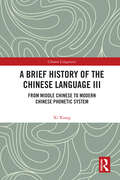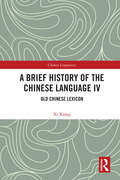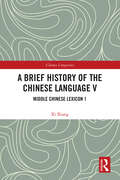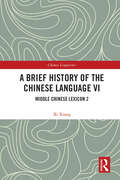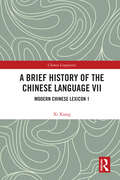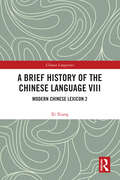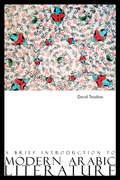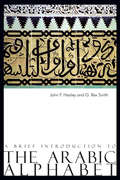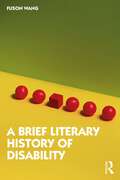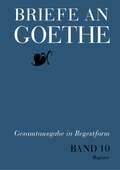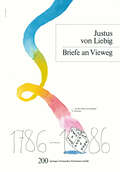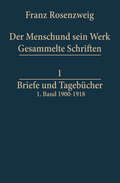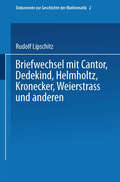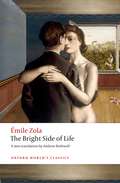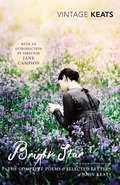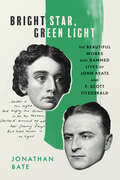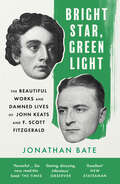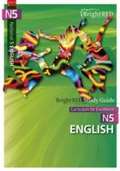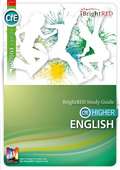- Table View
- List View
A Brief History of the Chinese Language III: From Middle Chinese to Modern Chinese Phonetic System (Chinese Linguistics)
by Xi XiangAs the third volume of a multi-volume set on Chinese phonetics, this book examines the phonetical system of Modern Chinese and phonetical changes from Middle Chinese to Modern Chinese.Chinese language history is generally split into three phases: (1) Old Chinese, the form of the Chinese language spoken between the 18th century BCE and the 3rd century CE, (2) Middle Chinese, between the 4th century AD to around the 12th century CE, and (3) Modern Chinese, since the 13th century. This volume studies the phonetical systems of Modern Chinese, including the initials system, vowel final system, nasal final system, entering final system, and tonal system. The author discusses the distinct change of these systems from the period of Middle Chinese to that of Modern Chinese and studies the formation of the standard pronunciation of the common language of the modern Han nation.This comprehensive groundwork on Chinese phonetical history will be a must read for scholars and student studying Chinese language, linguistics, and especially for beginning learners of Modern Chinese phonetics.
A Brief History of the Chinese Language IV: Old Chinese Lexicon (Chinese Linguistics)
by Xi XiangAs the fourth volume of a multi-volume set on the Chinese language, this book studies the lexical system of Old Chinese and the development of different types of lexicons during the period. Focusing on lexicons in Old Chinese, the early form of the Chinese language used between the 18th century BCE and the 3rd century CE, this volume first introduces the methods of word formation in Old Chinese by analyzing words inscribed in oracle bones of the Shang Dynasty. Illustrated with examples, it then examines the lexical features of Old Chinese and explores the progress and evolutionary features of monosyllabic words, polysyllabic words, lexical meanings, synonyms, and idioms and proverbs over the course of the volume.This comprehensive groundwork on Chinese lexical history is a must-read for scholars and students studying ancient Chinese language, linguistics, and especially for beginning learners of the Old Chinese lexicon.
A Brief History of the Chinese Language IV: Old Chinese Lexicon (Chinese Linguistics)
by Xi XiangAs the fourth volume of a multi-volume set on the Chinese language, this book studies the lexical system of Old Chinese and the development of different types of lexicons during the period. Focusing on lexicons in Old Chinese, the early form of the Chinese language used between the 18th century BCE and the 3rd century CE, this volume first introduces the methods of word formation in Old Chinese by analyzing words inscribed in oracle bones of the Shang Dynasty. Illustrated with examples, it then examines the lexical features of Old Chinese and explores the progress and evolutionary features of monosyllabic words, polysyllabic words, lexical meanings, synonyms, and idioms and proverbs over the course of the volume.This comprehensive groundwork on Chinese lexical history is a must-read for scholars and students studying ancient Chinese language, linguistics, and especially for beginning learners of the Old Chinese lexicon.
A Brief History of the Chinese Language V: Middle Chinese Lexicon 1 (Chinese Linguistics)
by Xi XiangAs the fifth volume of a multi-volume set on the Chinese language, this book studies the development of monosyllables and polysyllables in Middle Chinese and the overall evolution of lexical meanings during the period.Focusing on lexicons in Middle Chinese, the Chinese language used between the 4th century AD and the 12th century AD, the book first introduces the monosyllabic neologisms of Middle Chinese, including characters and words derived from Old Chinese lexicons and those newly created. It then examines the development of polysyllabic words in Middle Chinese, ranging from single morpheme words, tautologies and compound words. The final chapter discusses the changes and extension of word meanings in medieval Chinese.Illustrated with abundant examples, this comprehensive groundwork on Chinese lexical history will be a must read for scholars and students studying ancient Chinese language, linguistics and especially for beginning learners of the Middle Chinese lexicon.
A Brief History of the Chinese Language V: Middle Chinese Lexicon 1 (Chinese Linguistics)
by Xi XiangAs the fifth volume of a multi-volume set on the Chinese language, this book studies the development of monosyllables and polysyllables in Middle Chinese and the overall evolution of lexical meanings during the period.Focusing on lexicons in Middle Chinese, the Chinese language used between the 4th century AD and the 12th century AD, the book first introduces the monosyllabic neologisms of Middle Chinese, including characters and words derived from Old Chinese lexicons and those newly created. It then examines the development of polysyllabic words in Middle Chinese, ranging from single morpheme words, tautologies and compound words. The final chapter discusses the changes and extension of word meanings in medieval Chinese.Illustrated with abundant examples, this comprehensive groundwork on Chinese lexical history will be a must read for scholars and students studying ancient Chinese language, linguistics and especially for beginning learners of the Middle Chinese lexicon.
A Brief History of the Chinese Language VI: Middle Chinese Lexicon 2 (Chinese Linguistics)
by Xi XiangAs the sixth volume of a multi-volume set on the Chinese language, this book studies the influence of foreign culture on Middle Chinese lexicon and the development of synonyms, idioms and proverbs during the period.Focusing on lexicons in Middle Chinese, the middle form of the Chinese language used between the 4th century AD and the 12th century AD, this book first analyzes loanwords in Middle Chinese, a product of cultural exchange with western regions on the silk road and the impact of Buddhism. It then discusses the differences in meaning between monosyllables and polysyllables. The final chapter describes enriching idioms and proverbs and the major sources of words, including classical works, Buddhist texts and the spoken language.Illustrated with abundant examples, this comprehensive groundwork on Chinese lexical history will be a must read for scholars and students studying ancient Chinese language, linguistics and especially for beginning learners of the Middle Chinese lexicon.
A Brief History of the Chinese Language VI: Middle Chinese Lexicon 2 (Chinese Linguistics)
by Xi XiangAs the sixth volume of a multi-volume set on the Chinese language, this book studies the influence of foreign culture on Middle Chinese lexicon and the development of synonyms, idioms and proverbs during the period.Focusing on lexicons in Middle Chinese, the middle form of the Chinese language used between the 4th century AD and the 12th century AD, this book first analyzes loanwords in Middle Chinese, a product of cultural exchange with western regions on the silk road and the impact of Buddhism. It then discusses the differences in meaning between monosyllables and polysyllables. The final chapter describes enriching idioms and proverbs and the major sources of words, including classical works, Buddhist texts and the spoken language.Illustrated with abundant examples, this comprehensive groundwork on Chinese lexical history will be a must read for scholars and students studying ancient Chinese language, linguistics and especially for beginning learners of the Middle Chinese lexicon.
A Brief History of the Chinese Language VII: Modern Chinese Lexicon 1 (Chinese Linguistics)
by Xi XiangAs the seventh volume of a multi-volume set on the Chinese language, this book studies the Mongolian influence on neologisms in Modern Chinese and innovations in word formation and lexical meanings during the period.Focusing on lexicons in Modern Chinese, the Chinese language used since the 13th century CE, this book first introduces new monosyllables and the entry of spoken idioms and dialects into the written language as well as the mingling of the Chinese language with the Mongolian and Manchu languages. It then focuses on the development and features of polysyllabic words in Modern Chinese, covering alliterative and rhyming compounds and trisyllabic and four-syllable words. The final chapter discusses the change of lexical meaning systems in Modern Chinese based on an analysis of monosyllables, disyllables and polysyllables.Illustrated with abundant examples, this comprehensive groundwork on Chinese lexical history will be a must read for scholars and students studying the modern Chinese language and linguistics and especially for beginning learners of the modern Chinese lexicon.
A Brief History of the Chinese Language VIII: Modern Chinese Lexicon 2 (Chinese Linguistics)
by Xi XiangAs the final volume of a multi-volume set on the Chinese language, this book studies the Western and Japanese influence on the lexicon of Modern Chinese, lexical developments in synonyms, idioms and proverbs in modern times, and lexical developments in contemporary times.This volume first introduces the influence of foreign cultures on the modern Chinese lexicon with an emphasis on loanwords from Japanese and Indo-European languages. It then discusses the synonyms, idioms and proverbs of Modern Chinese, elucidating their evolution, sources and composition. The final part centers on the development of the Chinese lexicon after the May 4 Movement in 1919, marking the beginning of the contemporary phase of the Chinese language. The author analyses trends and types of neologisms and loanwords and analyzes the blend of Mandarin and dialect words as well as the necessity of lexical standardization.Illustrated with abundant examples, this comprehensive groundwork on Chinese lexical history will be a must read for scholars and students studying modern Chinese language, linguistics and especially for beginning learners of modern and contemporary Chinese lexicon.
A Brief History of the Chinese Language VIII: Modern Chinese Lexicon 2 (Chinese Linguistics)
by Xi XiangAs the final volume of a multi-volume set on the Chinese language, this book studies the Western and Japanese influence on the lexicon of Modern Chinese, lexical developments in synonyms, idioms and proverbs in modern times, and lexical developments in contemporary times.This volume first introduces the influence of foreign cultures on the modern Chinese lexicon with an emphasis on loanwords from Japanese and Indo-European languages. It then discusses the synonyms, idioms and proverbs of Modern Chinese, elucidating their evolution, sources and composition. The final part centers on the development of the Chinese lexicon after the May 4 Movement in 1919, marking the beginning of the contemporary phase of the Chinese language. The author analyses trends and types of neologisms and loanwords and analyzes the blend of Mandarin and dialect words as well as the necessity of lexical standardization.Illustrated with abundant examples, this comprehensive groundwork on Chinese lexical history will be a must read for scholars and students studying modern Chinese language, linguistics and especially for beginning learners of modern and contemporary Chinese lexicon.
A Brief Introduction to Modern Arabic Literature (A\brief Introduction Ser.)
by David TresilianModern Arabic literature remains little known and poorly understood despite growing curiosity among European readers. This brief introduction offers a unique overview, focusing on developments over the last fifty years. It provides a guide to the literary landscape, indicating the major landmarks in the shape of authors, ideas and debates. The picture that emerges shows that the literature of the modern Arab world, Europe's closest neighbour, is not so far from us as we are sometimes encouraged to think. A timely contribution to the dialogue between East and West, bringing modern Arabic literature into the mainstream for English-speaking readers. 'Tresilian's book is not only informative about its subject but also provides thought-provoking messages to the general reader.' -- Denys Johnson Davies Banipal
A Brief Introduction to The Arabic Alphabet
by John F. Healey G. Rex SmithThe Arabic alphabet has a rich history, one that is closely linked with the development of culture and society in the Middle East. In this comprehensive introduction the authors trace the origins of the Arabic alphabet back to Aramaic, which also gave rise to the Hebrew and Greek alphabets. Using detailed illustrations the authors investigate early Arabic papyri and early Islamic inscriptions as well as classical Arabic scripts. John F. Healey and G. Rex Smith bring the story up to the present day by examining the practice of calligraphy, printing and computing in Arabic.
A Brief Literary History of Disability
by Fuson WangA Brief Literary History of Disability is a convenient, lucid, and accessible entry point into the rapidly evolving conversation around disability in literary studies. The book follows a chronological structure and each chapter pairs a well-known literary text with a foundational disability theorist in order to develop a simultaneous understanding of literary history and disability theory. The book as a whole, and each chapter, addresses three key questions: • Why do we even need a literary history of disability? • What counts as the literature of disability? • Should we even talk about a literary aesthetic of disability? This book is the ideal starting point for anyone wanting to add some disability studies to their literature teaching in any period, and for any students approaching the study of literature and disability. It is also an efficient reference point for scholars looking to include disability studies approaches in their research.
A Brief Literary History of Disability
by Fuson WangA Brief Literary History of Disability is a convenient, lucid, and accessible entry point into the rapidly evolving conversation around disability in literary studies. The book follows a chronological structure and each chapter pairs a well-known literary text with a foundational disability theorist in order to develop a simultaneous understanding of literary history and disability theory. The book as a whole, and each chapter, addresses three key questions: • Why do we even need a literary history of disability? • What counts as the literature of disability? • Should we even talk about a literary aesthetic of disability? This book is the ideal starting point for anyone wanting to add some disability studies to their literature teaching in any period, and for any students approaching the study of literature and disability. It is also an efficient reference point for scholars looking to include disability studies approaches in their research.
Briefe an Goethe: Band 10: 1823–1824 (10/1 Regesten + 10/2 Register)
Die Gesamtausgabe der Briefe an Goethe in Regestform erschließt mehr als 19.800 Briefe von etwa 3.500 Absendern. Die bisher erschienenen neun Bände umfassen den Zeitraum 1764 bis 1822 und präsentieren über 14.000 Briefregesten. Das mehrgliedrige Regest informiert über den Inhalt des Briefes und stellt ihn in den Zusammenhang von Goethes persönlichen Korrespondenzbeziehungen. Die Briefregesten werden durch Orts-, Personen- und Werkregister ergänzt. Band 10 dokumentiert Goethes persönliche Korrespondenz in den Jahren 1823 und 1824. Er umfasst die Regesten von fast 1.100 Briefen von 448 Absendern.
Briefwechsel mit Cantor, Dedekind, Helmholtz, Kronecker, Weierstrass und anderen (Dokumente zur Geschichte der Mathematik #2)
by Rudolf LipschitzEin Abdruck des gesamten Briefwechsels würde etwa 1500 Seiten erfordern, kam also nicht in Betracht. Es wurde versucht, die interessantesten Briefe herauszusuchen, aber die getroffene Aus wahl ist sicher subjektiv und teilweise willkürlich. Es wurde nicht einmal versucht, nach formal einheitlichen Kriterien vor zugehen. Z. B. wurde der Briefwechsel mit Dedekind und Kronecker in großen Teilen vollständig aufgenommen, weil hier auch Lipschitz' Briefe vorhanden sind und vor allem der Briefwechsel mit Dedekind historisch von besonderer Bedeütung ist. Aus ande ren Korrespondenzen wurden oft nur einzelne Briefe oder Teile einzelner Briefe ausgewählt. Gelegentlich werden in eckigen Klammern kurze Angaben über den Inhalt ausgelassener Passagen gemacht. Im Prinzip wurde der Originaltext buchstabengetreu übernommen einschließlich orthographischer Fehler und der ur sprünglichen Interpunktion; offensichtliche Versehen wurden allerdings meistens verbessert. Fußnoten und Anmerkungen sind jeweils nach den einzelnen Korrespondenzen zusammengefaßt. - 2 - Brief von Cantor (Auszug); vgl. S. 29 bis 3; - 3 - - 4 - 7. ~ ;;LL. . . #-~r ~ ~'v ~'~ a. /~ ~ r ~ . /' . . . . . . !v-d~r 4Vh'. ,-. . . ,4. ~ ~~ r'-~ . . . . 'v-/}-~
The Bright Side of Life (Oxford World's Classics)
by Émile Zola'Neither spoke another word, they were gripped by a shared, unthinking madness as they plunged headlong together into vertiginous rapture.' Orphaned with a substantial inheritance at the age of ten, Pauline Quenu is taken from Paris to live with her relatives, Monsieur and Madame Chanteau and their son Lazare, in the village of Bonneville on the wild Normandy coast. Her presence enlivens the household and Pauline is the only one who can ease Chanteau's gout-ridden agony. Her love of life contrasts with the insularity and pessimism that infects the family, especially Lazare, for whom she develops a devoted passion. Gradually Madame Chanteau starts to take advantage of Pauline's generous nature, and jealousy and resentment threaten to blight all their lives. The arrival of a pretty family friend, Louise, brings tensions to a head. The twelfth novel in the Rougon Macquart series, The Bright Side of Life is remarkable for its depiction of intense emotions and physical and mental suffering. The precarious location of Bonneville and the changing moods of the sea mirror the turbulent relations of the characters, and as the story unfolds its title comes to seem ever more ironic.
The Bright Side of Life (Oxford World's Classics)
by Émile Zola'Neither spoke another word, they were gripped by a shared, unthinking madness as they plunged headlong together into vertiginous rapture.' Orphaned with a substantial inheritance at the age of ten, Pauline Quenu is taken from Paris to live with her relatives, Monsieur and Madame Chanteau and their son Lazare, in the village of Bonneville on the wild Normandy coast. Her presence enlivens the household and Pauline is the only one who can ease Chanteau's gout-ridden agony. Her love of life contrasts with the insularity and pessimism that infects the family, especially Lazare, for whom she develops a devoted passion. Gradually Madame Chanteau starts to take advantage of Pauline's generous nature, and jealousy and resentment threaten to blight all their lives. The arrival of a pretty family friend, Louise, brings tensions to a head. The twelfth novel in the Rougon Macquart series, The Bright Side of Life is remarkable for its depiction of intense emotions and physical and mental suffering. The precarious location of Bonneville and the changing moods of the sea mirror the turbulent relations of the characters, and as the story unfolds its title comes to seem ever more ironic.
Bright Star: The Complete Poems and Selected Letters (British Poets Ser.)
by John Keats Jane CampionWITH AN INTRODUCTION BY DIRECTOR JANE CAMPIONJohn Keats died in penury and relative obscurity in 1821, aged only 25. He is now seen as one of the greatest English poets and a genius of the Romantic age. This collection, which contains all his most memorable works and a selection of his letters, is a feast for the senses, displaying Keats' gift for gorgeous imagery and sensuous language, his passionate devotion to beauty, as well as some of the most moving love poetry ever written.
Bright Star, Green Light: The Beautiful Works and Damned Lives of John Keats and F. Scott Fitzgerald
by Jonathan BateAn immensely pleasurable biography of two interwoven, tragic figures: John Keats and F. Scott Fitzgerald In this radiant dual biography, Jonathan Bate explores the fascinating parallel lives of John Keats and F. Scott Fitzgerald, writers who worked separately—on different continents, a century apart, in distinct genres—but whose lives uncannily echoed. Not only was Fitzgerald profoundly influenced by Keats, titling Tender is the Night and other works from the poet’s lines, but the two shared similar fates: both died young, loved to drink, were plagued by tuberculosis, were haunted by their first love, and wrote into a new decade of release, experimentation, and decadence. Both were outsiders and Romantics, longing for the past as they sped blazingly into the future. Using Plutarch’s ancient model of “parallel lives,” Jonathan Bate recasts the inspired lives of two of the greatest and best-known Romantic writers. Commemorating both the bicentenary of Keats’ death and the centenary of the Roaring Twenties, this is a moving exploration of literary influence.
Bright Star, Green Light: The Beautiful And Damned Lives Of John Keats And F. Scott Fitzgerald
by Jonathan BateA dazzling biography of two interwoven, tragic lives: John Keats and F. Scott Fitzgerald.
BrightRED Study Guide: Curriculum for Excellence National 5 English (PDF)
by Christopher NicolAn outstanding Study Guide and a must-buy for all N5 English students and teachers!</p
BrightRED Study Guide: CfE Higher English (PDF)
by Christopher NicolAn easy-to-use guide designed to take students through each stage of their studies and achieve the best possible results in the new CfE higher English qualification.
